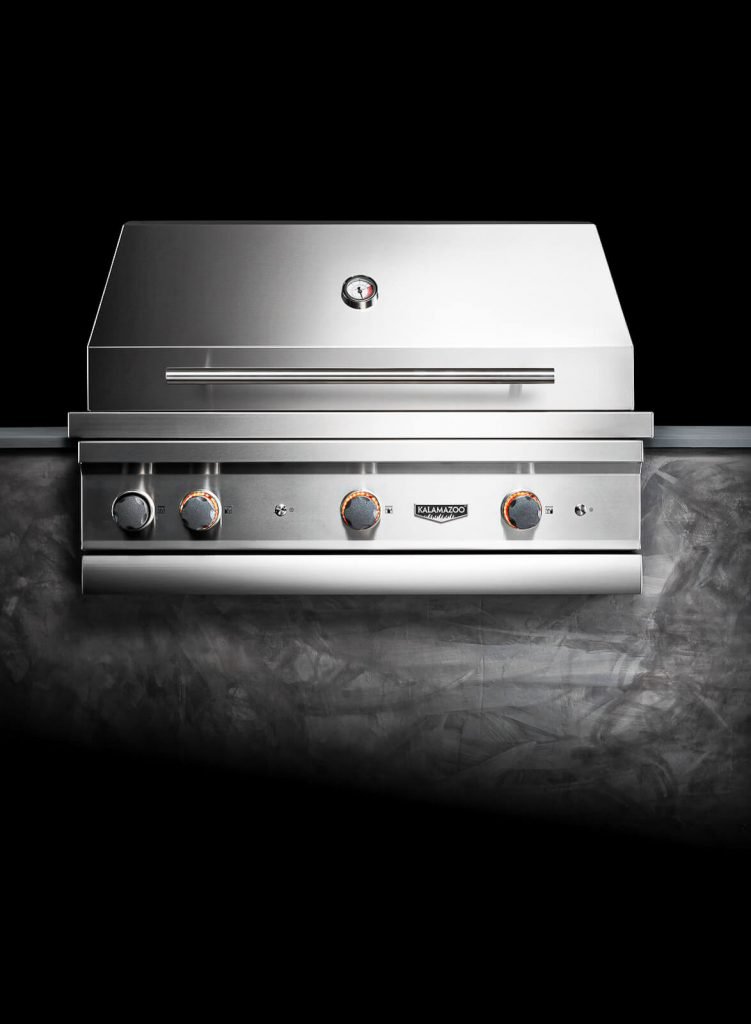This Kalamazoo Gas Grill Head was supplied to us by the manufacturer for testing and review purposes. Kalamazoo Outdoor Gourmet in no way influenced this review nor did they see the review before it was posted. Further, we did not keep the grill (or any equipment supplied to us by any manufacturer for the purpose of reviews). The opinions are our own based on months of testing; after witch the grill will be returned to Kalamazoo Outdoor Gourmet to ensure the integrity of our review process.
I’ve used many different gas grills over the years. In fact, I still have my circa 1980’s Weber gasser that is in serious need of restoration. I say this to emphasize the number of gas grills I’ve used, as a comparison point for the unit I have been testing for the past three months or so.
In most cases, gas grills just aren’t very exciting — and they come with their share of drawbacks:
- They generally don’t get hot enough to sear very well.
- Those that come with a rotisserie typically make use of an external, mass produced rotisserie motor. Those motors are assembled with plastic gears that fail after even moderate duty, and need to be stored somewhere when not in use.
- They struggle to hold a consistent temperature.
- Food often lacks flavor.
- Due to corrosion, cooking grates and other internal parts often need to be replaced every four to five years.
In this review I’ll discuss what Kalamazoo has done to address these known issues. What I loved about their gas grill, and what could use some improvement.
Item Specs For Drop In Units
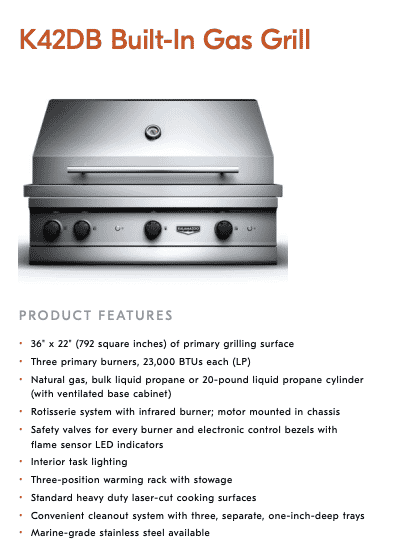
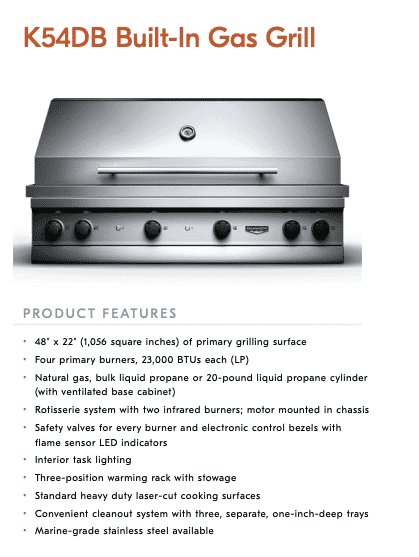
Item Specs For Stand Alone Units
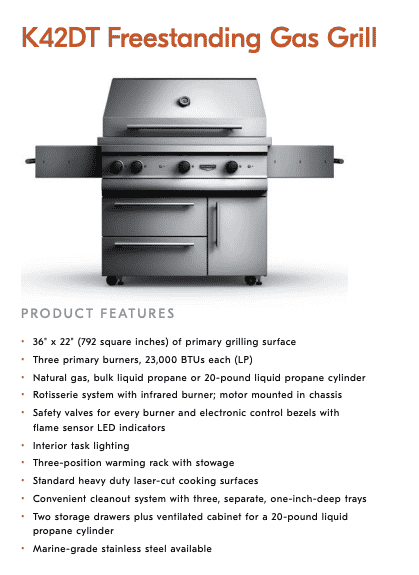
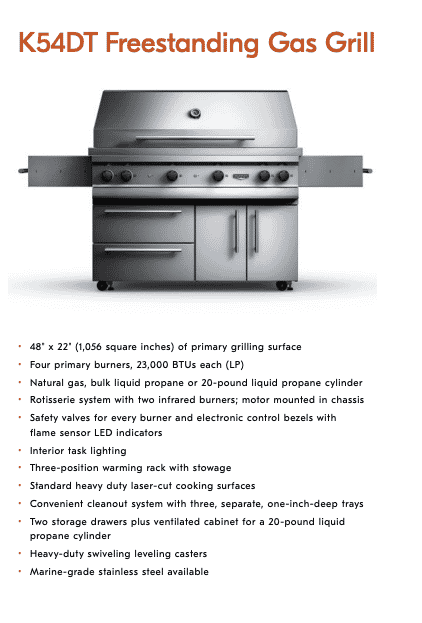
What We Loved
The list of what’s loved about this grill is extensive, and addresses all of the drawbacks associated with a typical gas grill.
Build Quality
Like everything from Kalamazoo, the quality of the build is second to none. Each one of these grills is hand made from 304 stainless steel by the artisans in Kalamazoo, Michigan. (Marine grade stainless is available for those that live in harsh environments.)
When using a mass produced, machine made grill, oversights, quality escapes, and cut corners are evident and commonplace. That wasn’t the case with the Gas Grill Head.
I found the fit and finish of the grill to be impeccable. The lid opens and closes smoothly, effortlessly and without noise. This isn’t always the case, even with other high end grills.
The welds are polished out and appear seamless, and the hardware used is the same stainless steel the grill is made of, so it doesn’t rust.
I live in a high humidity, and fairly rainy geography; throughout the testing I didn’t cover the grill, leaving it exposed to the elements.
Prior to writing this review I went over the grill with a fine tooth comb, looking for any signs of rust or corrosion. On the seams, on the hardware, burners, etc. I found none. Impressive indeed given the climate of the Southern part of the country.
Searing Ability
The lack of adequate heat for searing is without a doubt my chief complaint about using a gas grill. Gas grill manufacturers have realized this as well. To combat this, many have started to incorporate a “searing station” which is an infrared burner used solely for searing.
While this burner does the job, it takes up a decent amount of real estate on a grill’s cooking surface while only performing a singular task; searing. And, if you want to sear more than one or two steaks at a time, you aren’t able to because of the size limitations.
Giving up that space in order to accomplish this singular but very important task is a worthwhile trade off. So, I’ve been a fan of this setup despite the drawbacks.
When I took delivery of the unit Kalamazoo supplied for testing & review and noted there was no “searing station” I was skeptical. Despite their claim that the grill was capable of more than 750°F, I wasn’t sold on the tube style burners providing the needed heat.
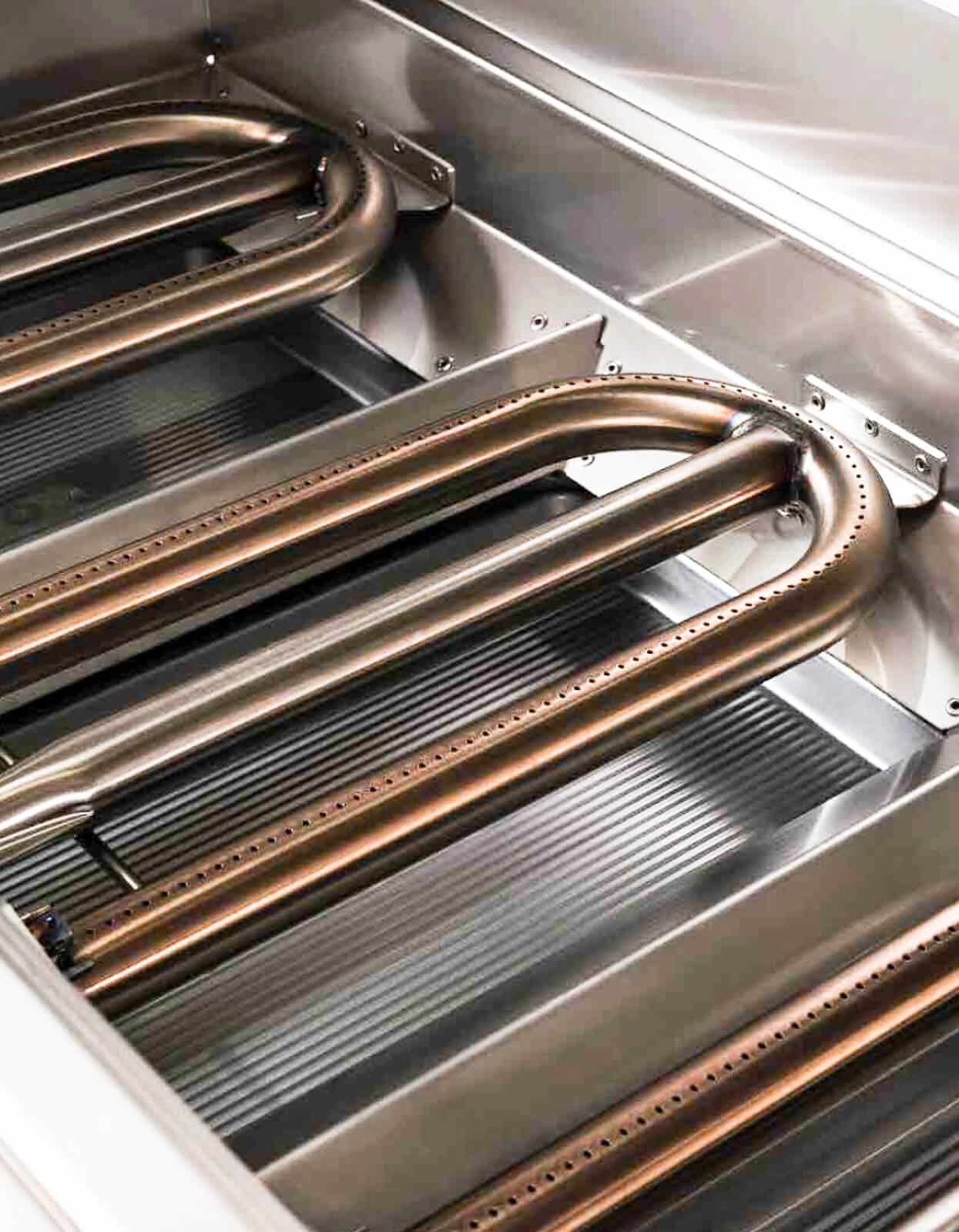
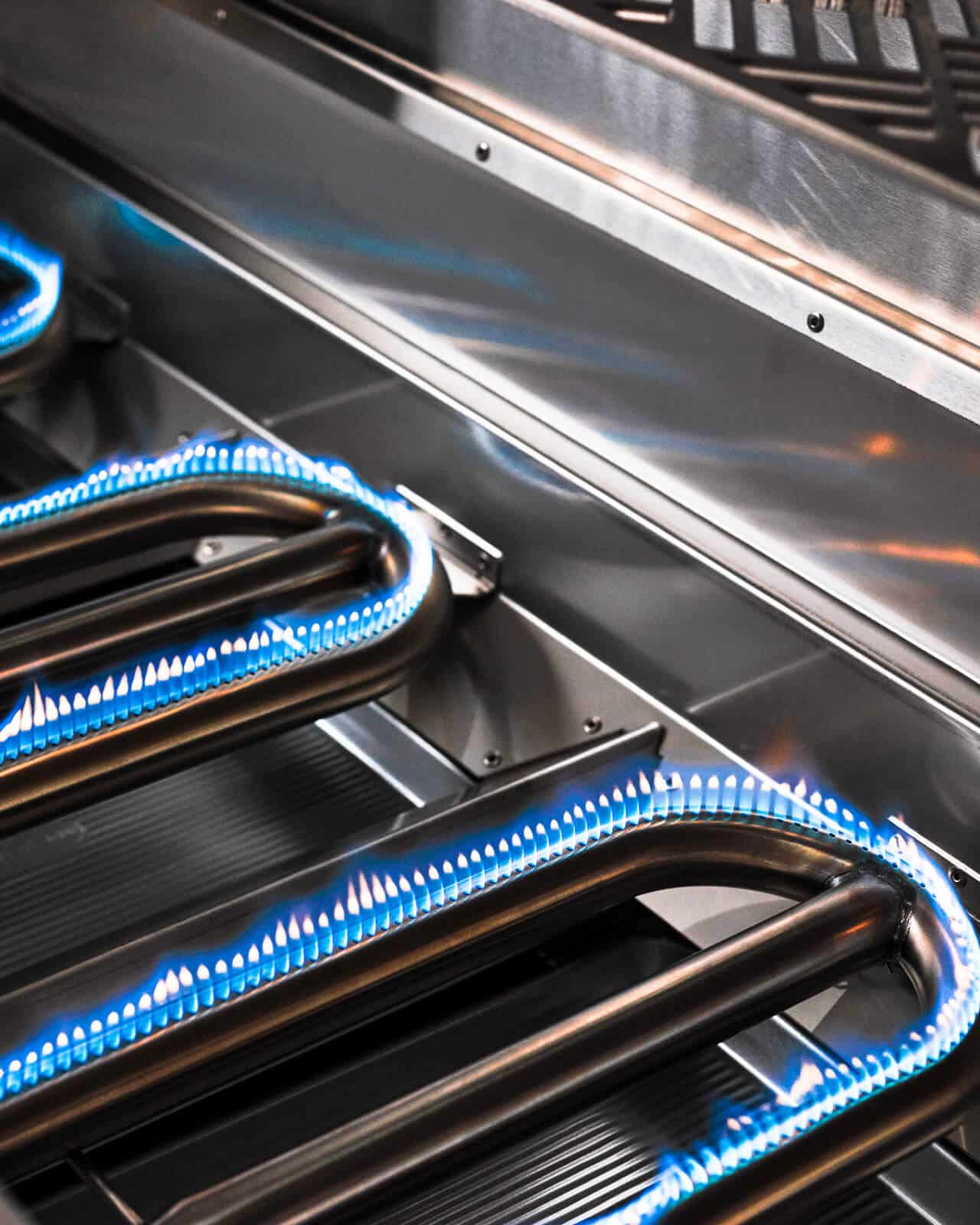
What I found was that when Kalamazoo claimed “more than 750°F” what they meant was way more. Using a reliable thermocouple style thermometer, (capable of reading temperatures from -148 to 2500°F) I recorded grill grate temps of 830°F. Incredible for a gas grill.
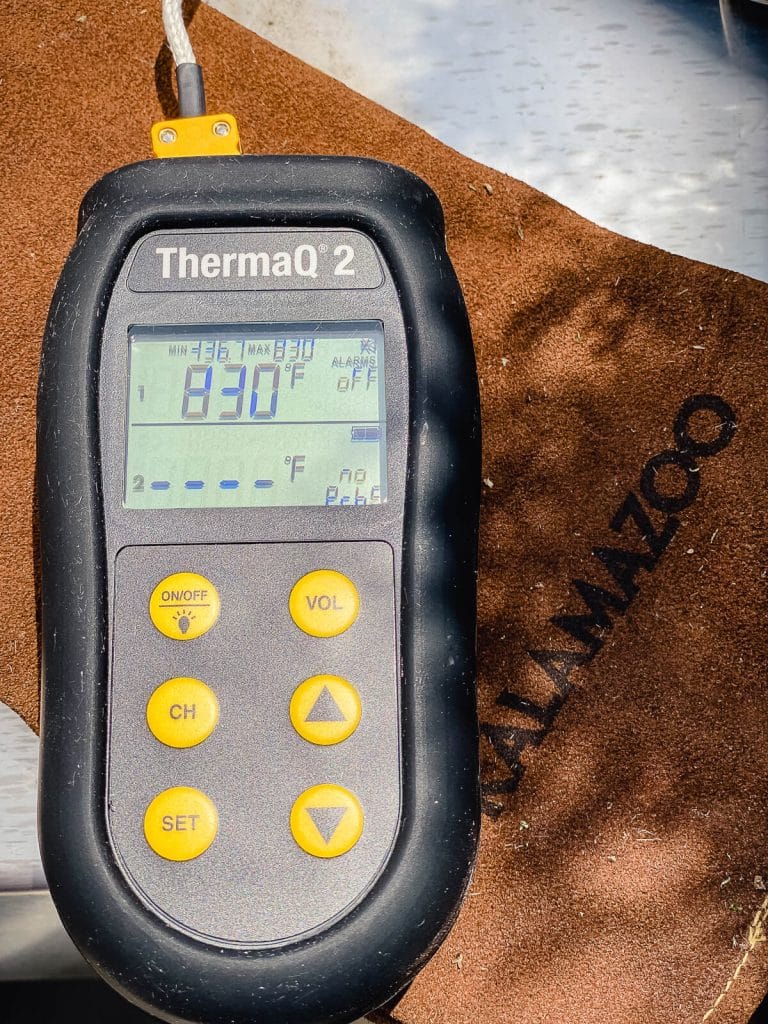
What’s important to note about this test is that the 830°F was achieved at the cooking grate level.
Plenty of manufacturers will claim their burner is capable of 1000°F or more. While those claims may be accurate, users aren’t cooking on the surface of the burner. They are cooking on the grate above the burner; several inches above in almost all cases. So, the temperature at the cooking grate is always lower (much lower in most cases) than advertised burner capability.
Combining the extreme heat from the burner, with the mass of the heavy duty, laser cut grill grates make searing on this unit enjoyable.
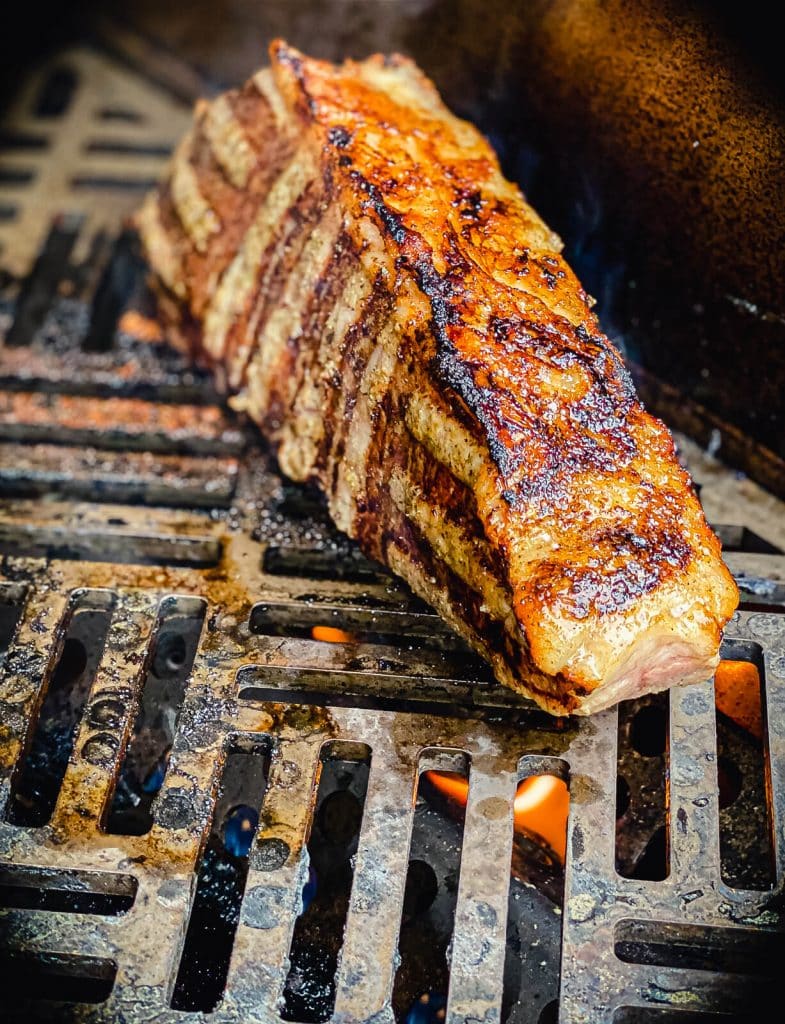
Equally impressive to the grill grate temperatures, is the temperatures that can be achieved in this grill with all three burners set to high.
After lighting all three burners, and allowing them to preheat the grill on the high setting, I saw temperatures inside the grill close to 900°F — in under 25 minutes. This far exceeded expectations based on the Kalamazoo claim of “more than 750°F.”
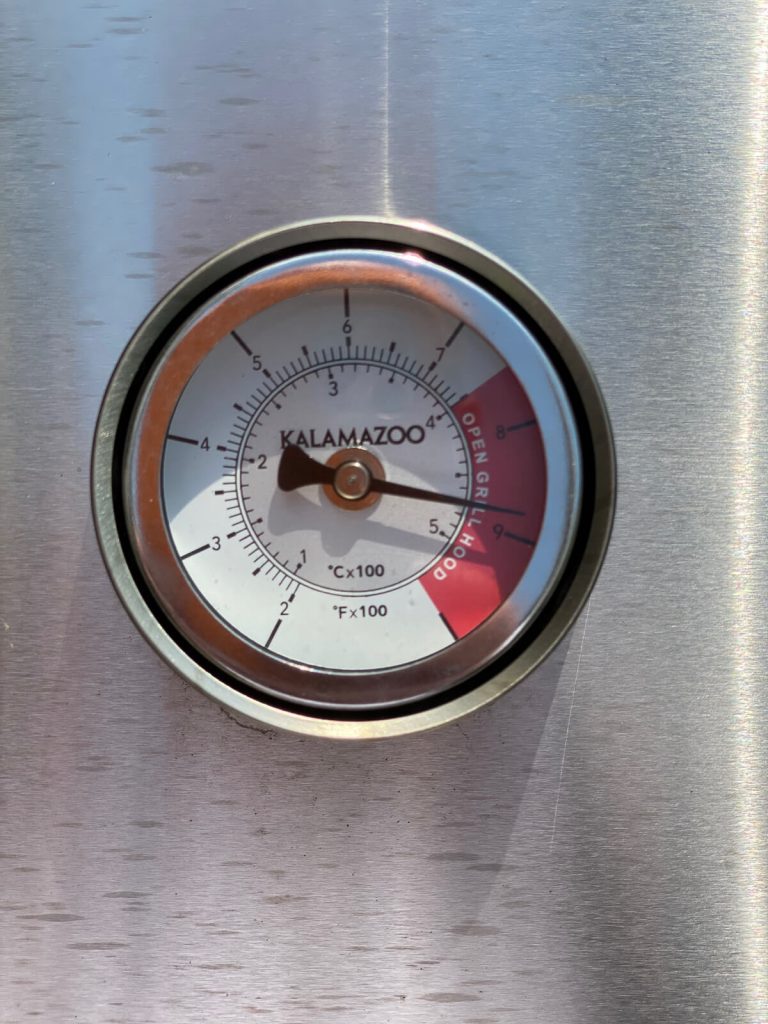
Temperature Recovery
When a gas grill’s lid is opened, heat escapes quickly. It generally takes in the range of five to seven minutes to get the grill back to the desired temperature. This is due to a number of reasons but chief among them are burner output, mass, and heat soaking.
I found the temperature recovery time after opening the lid on the Kalamazoo to be exceptional. Helped no doubt, by the sheer amount of material used to make this grill, over 300 pounds of steel.
Once that amount of steel is heat soaked, it makes recovery time happen very quickly. Just over two minutes in the tests I conducted.
To perform this test, I preheated the grill to a steady 375°F, as indicated by a reliable leave-in thermometer. Then the lid was fully opened, left open for 15 seconds, and then closed.
I conducted this test five times, noting the time to recover temperature back to 375°F each time:
Test 1: 2:11
Test 2: 2:17
Test 3: 2:14
Test 4: 2:23
Test 5: 2:16
Safety
Kalamazoo is the first North American grill manufacturer to introduce safety gas control valves across their entire product line. This system prevents gas from flowing, if the burners aren’t lit and actually burning the flowing gas.
When the burners are lit, the gas control knobs are backlit to an orange glow — alerting users as to which burners are on, at a quick glance.
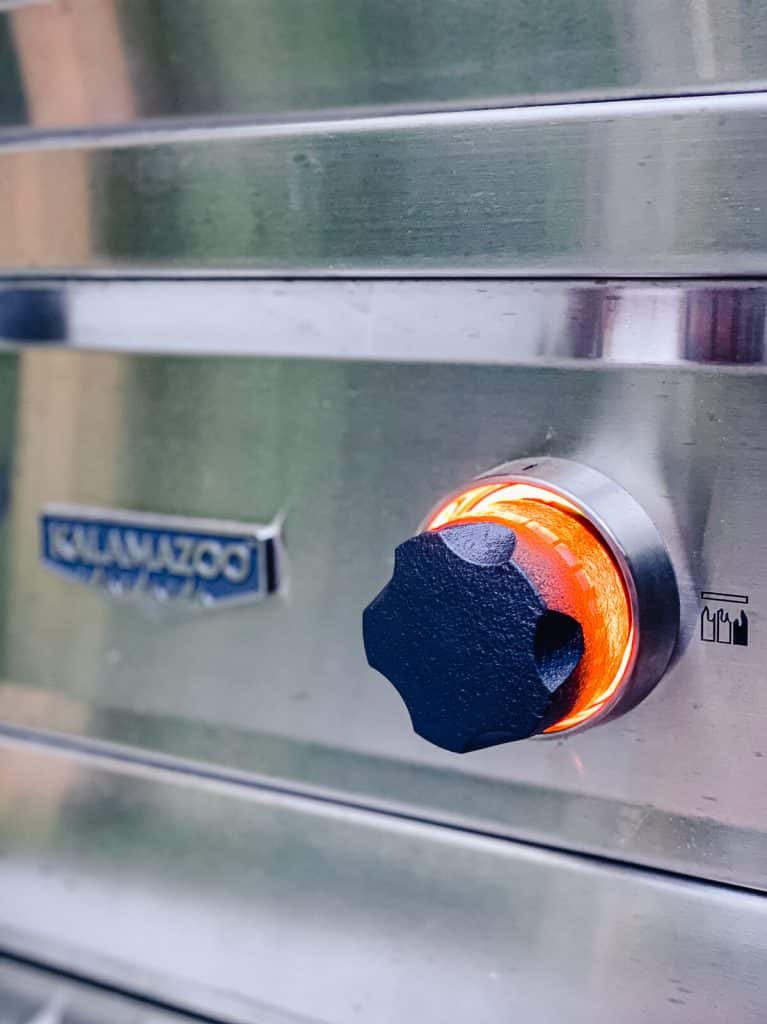
Why is this important? It’s reported there are approximately 7000 gas grill fires every year. These happen when gas is flowing into the grill, but not burning.
Maybe the burner was blown out by a wind gust, etc. Gas, still being delivered to the burner but not being burned, builds up in the grill. When flame is introduced, an explosion happens due to the abundance of gas that’s settled into the bottom of the grill body.
With the technology that Kalamazoo incorporates, gas build up can’t happen. The gas valves are closed unless the burners are actually lit, burning the gas as it’s supplied to the burners.
Versatility
With its expansive temperature range, and ability to hold consistent temperatures for long periods of time, this unit is capable of much more than you’d expect from a typical gas grill.
I’ve grilled on this unit, of course. I’ve also baked, roasted, and broiled. The infrared rotisserie burner doubles as a salamander style broiler when used in conjunction with the adjustable warming rack.
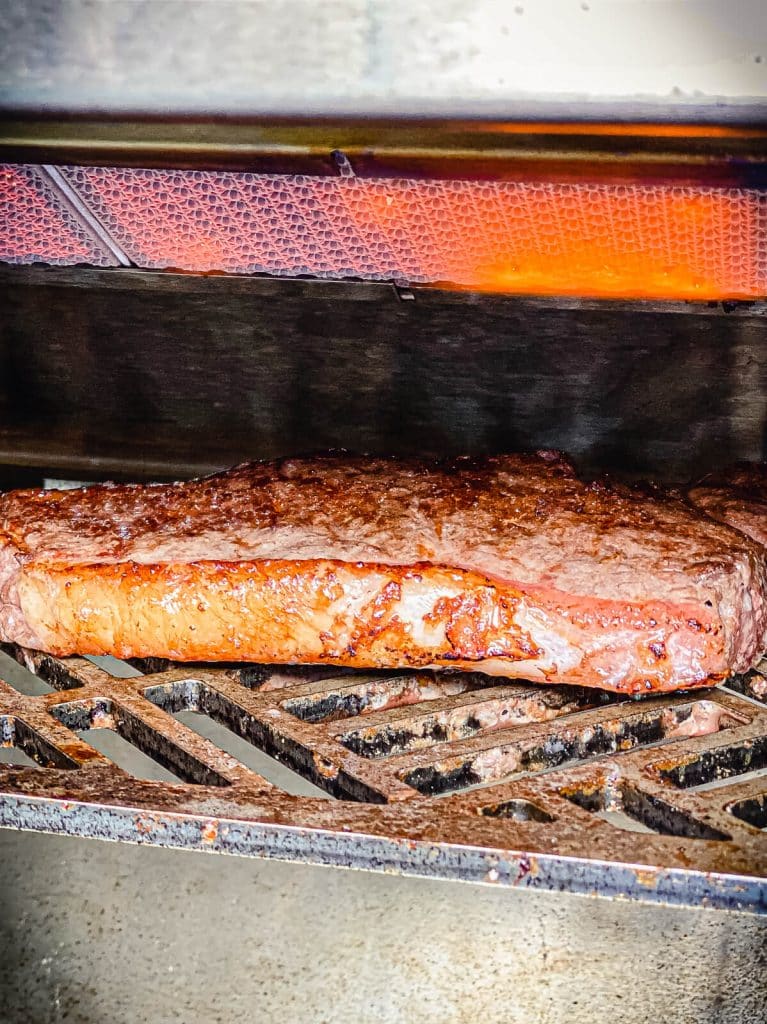
The warming rack isn’t an obligatory afterthought on this unit. Instead, it’s designed with purpose. It’s also adjustable so it can be used for more than warming, and acts as another cooking surface if needed. When not needed, or when using the rotisserie, the rack folds away, preventing the need for storing it externally.
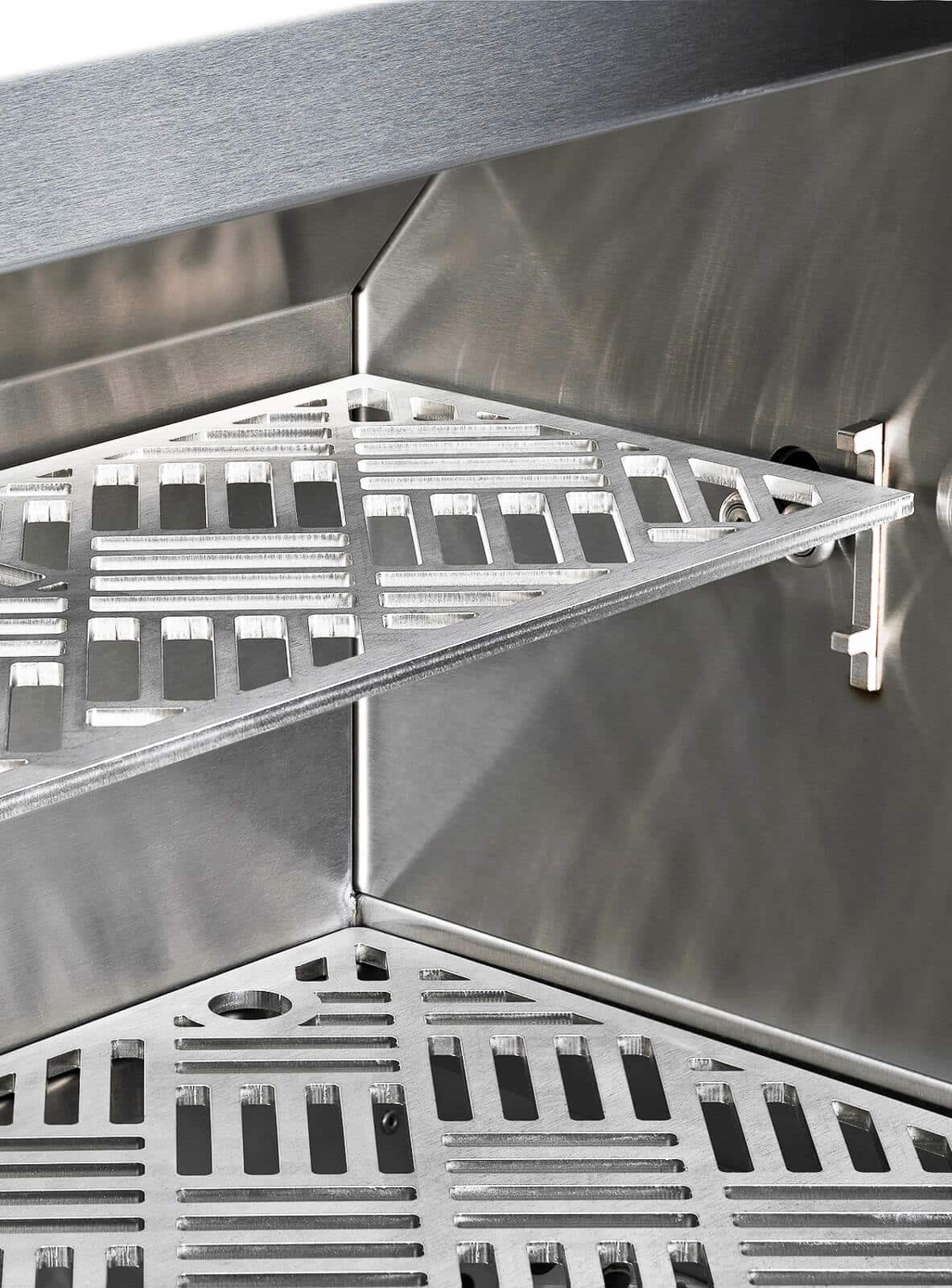
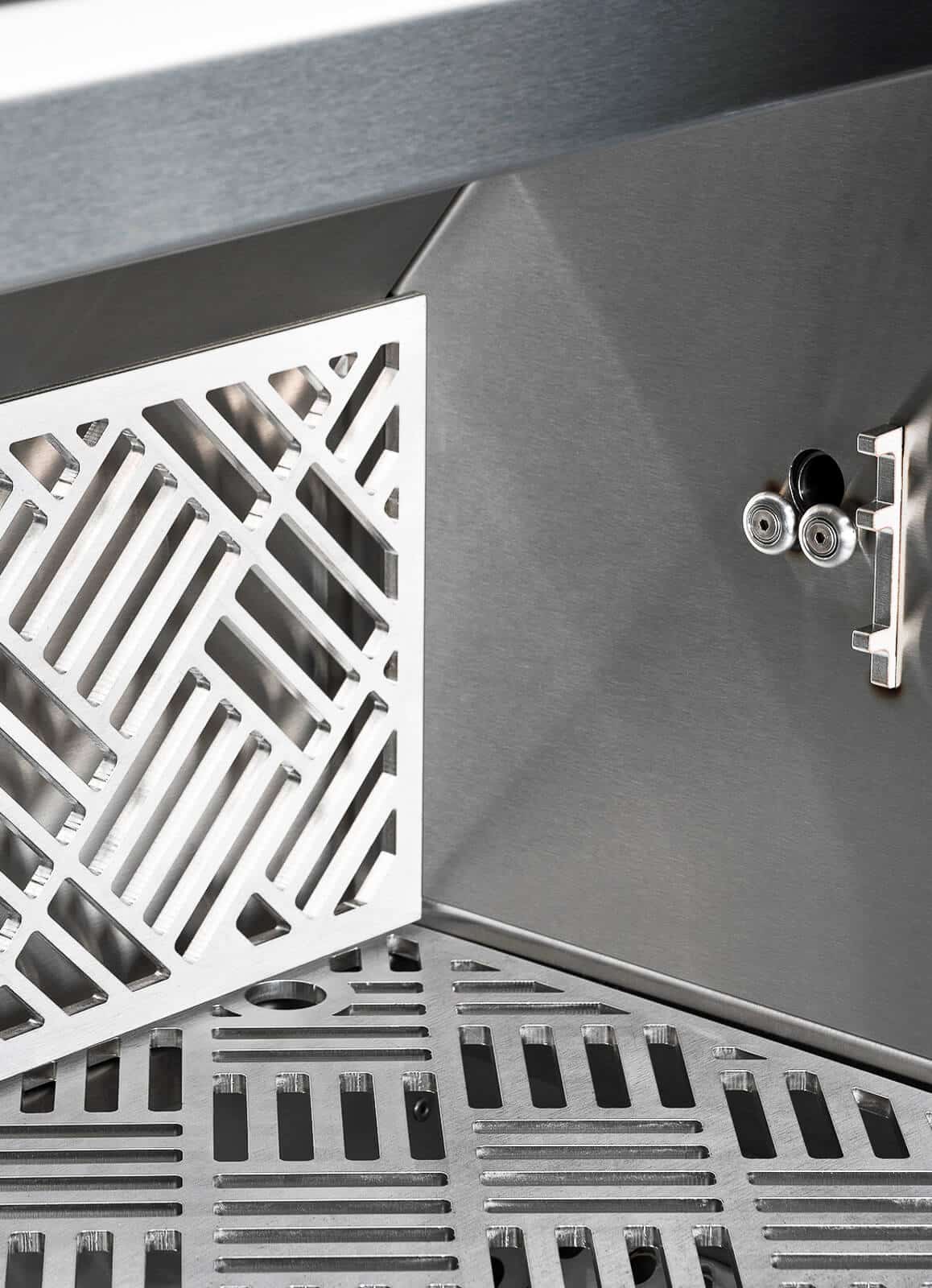
The rotisserie used in the Gas Grill Head incorporates the same rotisserie used in the more expensive Hybrid Fire Grill. Kalamazoo doesn’t use an external plastic rotisserie motor to drive the rotisserie spit.
Instead, they use a chain driven internal rotisserie. No plastic gears to fail, and no need to store the motor when not using it.
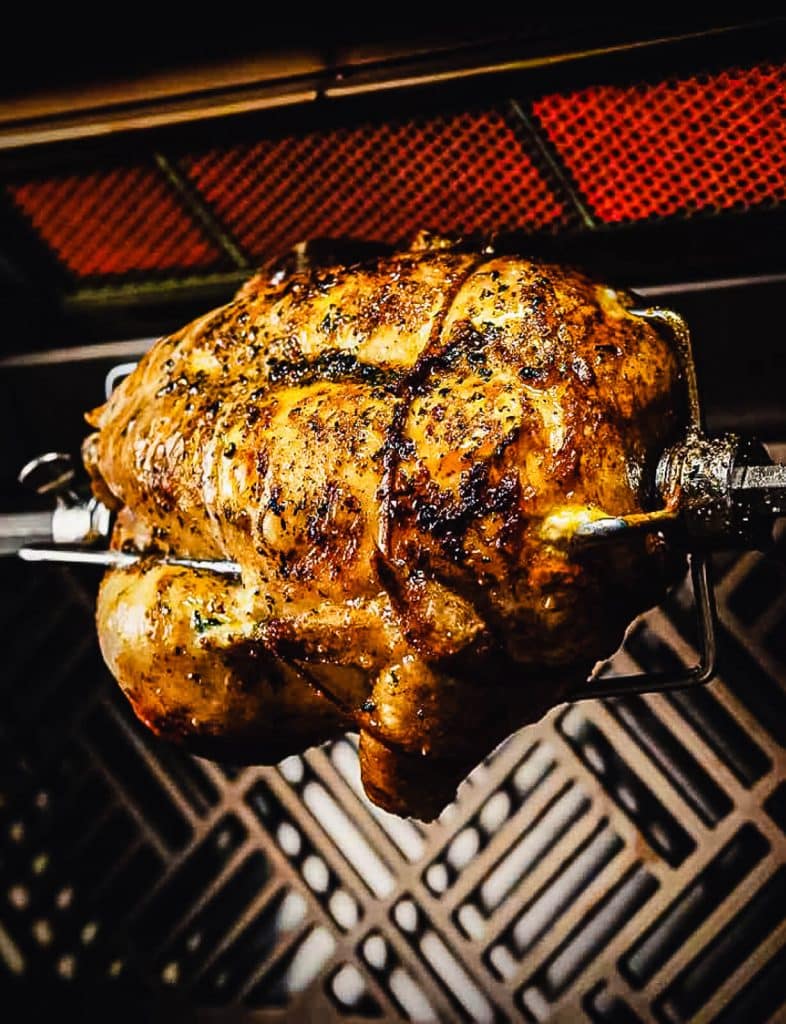
Food Flavor
The basic “knock” on all gas grills is the lack of flavor infused into the food cooked on them. There is only so much that can be done to combat that, outside of the hybrid gas / charcoal set up.
I found that the heat deflectors used in this unit helped add flavor. Aside from deflecting and creating an even heat across the entire grilling surface, these deflectors serve another purpose.
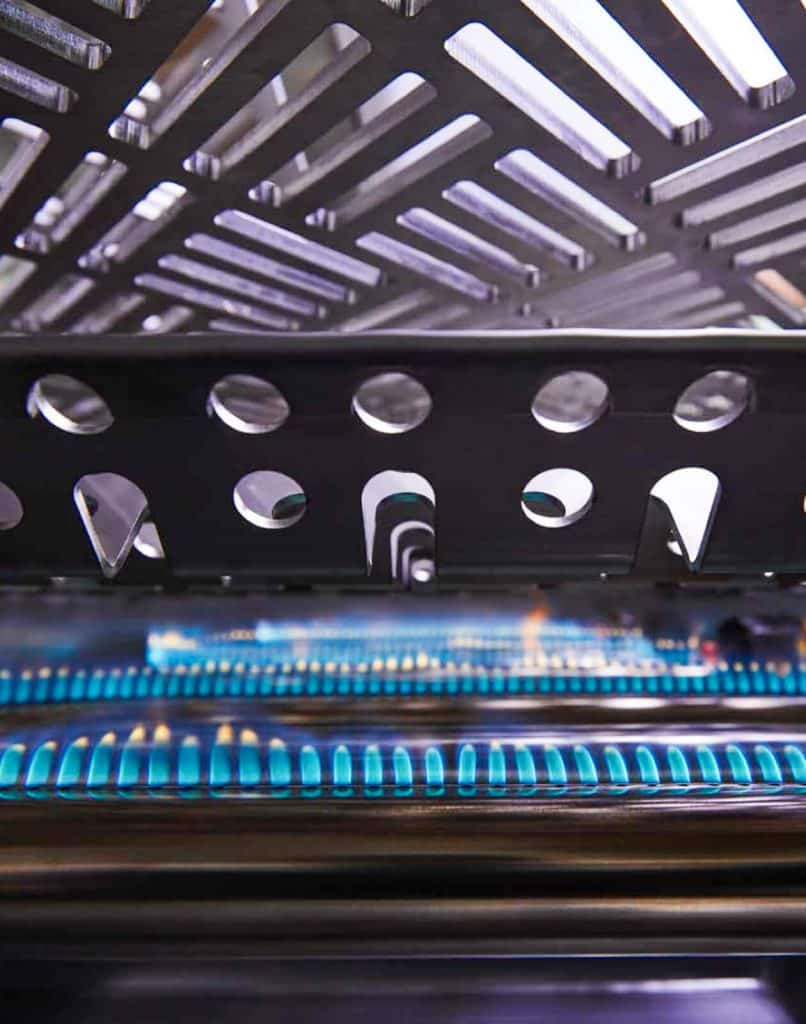
They sit between the burner and grill grate, and get extremely hot. As food is cooking, the drippings drop down onto the deflector and burn up. The flavorful steam that is created from rendered fats, marinades, etc. then engulfs the food being cooked, adding flavor.
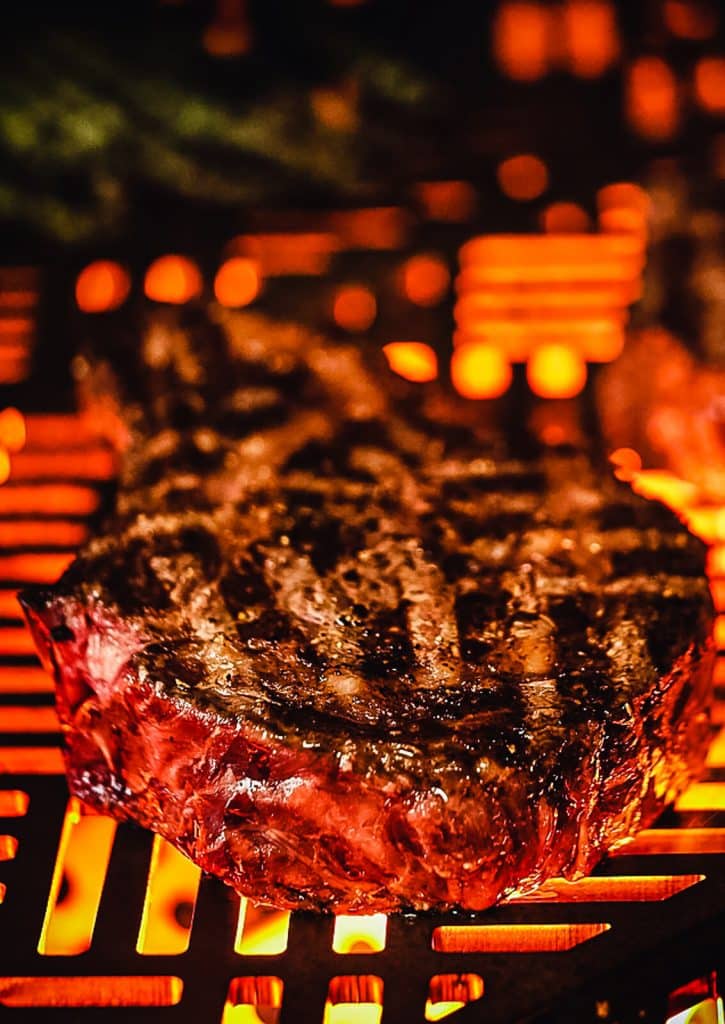
Is it a substitute for charcoal? No, not at all. But it’s absolutely better than a gas grill that doesn’t use this design.
Clean Up
Often an afterthought, cleaning a gas grill can be kind of a pain. Most of the time this task requires the removal of the grill grates, burners, etc. to clean out the grills body.
Kalamazoo incorporates a clean out system that uses three separate drip pans. These pans can be removed, cleaned and reinstalled. This prevents the need for disassembling the entire grill to get at the bottom of it for a thorough cleaning.
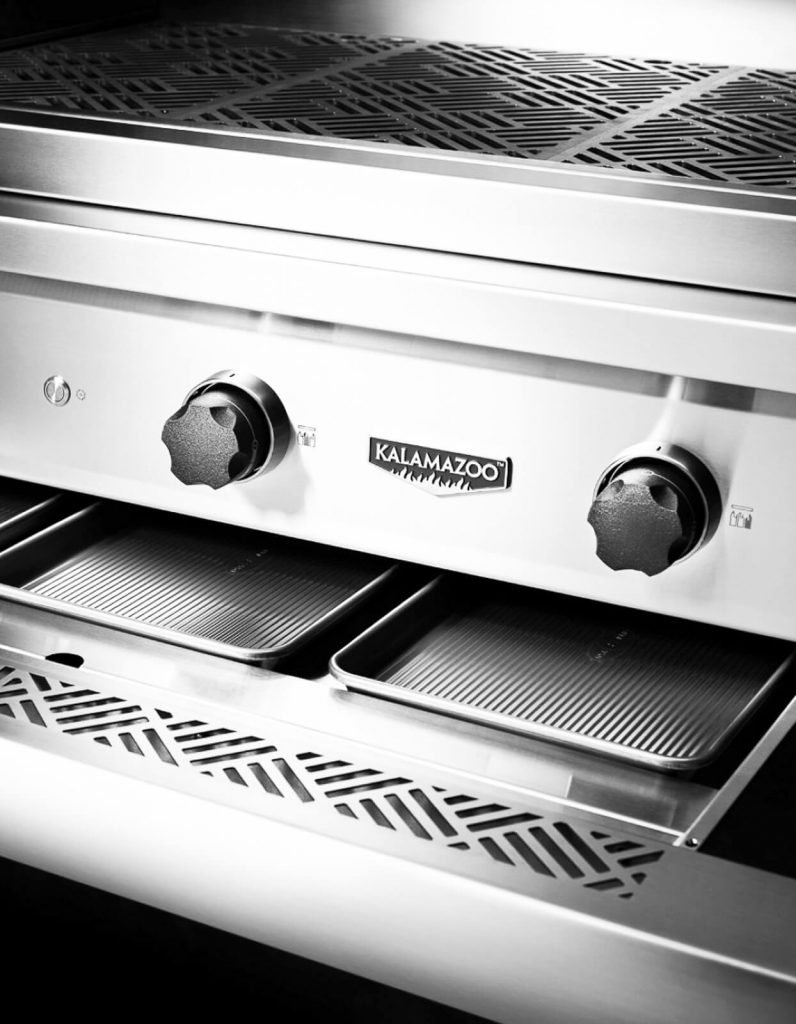
What Could Be Improved
After all of the pluses with this grill, I am nitpicking here for what I think could be improved on. This list is short, but includes two things I’d really like to see addressed.
First, the task lighting. While other features of the grill exceeded expectations, I’d describe the lighting as only adequate. It is, as it’s described; “task” lighting. Adequate for the task at hand directly under the lights.
Call this a personal choice, but I’d like to see something closer to “stadium lighting” here. I want this whole grill lit up like the midway at the county fair and that’s not what you get from task lighting.
Not a huge deal in the summer months when evenings are still pretty well lit, but in the hours of darkness, winter grilling, etc. more light would be helpful.
UPDATE: I’ve changed my opinion on the lighting situation, drastically. The bottom line is the lights are more than bright enough and I would definitely consider them “stadium” lighting. What changed? There are only two things that could be at play here, and admittedly I’m not sure if it’s one or the other, or both.
First, the extension cord I was using was excessively long and probably 25 years old. A friend needed to borrow that cord so it was swapped with a newer (and much shorter) cord.
Second, in the fall months I’m using the grill in much lower light conditions, perhaps the ambient light of summer months skewed my opinion of the task lighting brightness?
The point is, the lights provide more than enough light for the task. Was it the old, long cord? Was it the amount of ambient light in the summer? I don’t know, but the review deserved an update with my latest observations.
Finally, while I appreciate the drip pans I would much prefer them to be either disposable aluminum pans, or have the option to purchase disposable liners.They trays do a great job collecting drippings, etc. and removing them is simple. Washing them however, is sort of a pain.
A disposable insert would be perfect, and make clean up even more simple. As it stands, I line the trays with aluminum foil to make cleaning them up easier.
Who’s It For?
This grill is clearly designed for the built in application, though it’s offered as a free standing unit as well. As such, it’s a great option for those building their dream outdoor kitchen, where high end performance and design features are equally as important.
Because it’s a drop in unit, users have the option to put a cabinet under the grill, or use a brick, stone, etc. facade. It is truly a sexy grill when placed in a built it surrounding.
If you’re someone who loves charcoal grilling, but life has gotten in the way and you simply no longer have the time required to tend to a charcoal grill, this grill is for you.
If you’re just not comfortable with charcoal, but want the benefits of the heat charcoal can bring, this grill is for you.
If you want the best performance possible from a gas grill, and are serious about it not just looking good, but puttin’ in work, this grill is for you.
Final Thoughts
I’m a believer. I will, 10/10 always prefer a charcoal grill to a gas grill, it’s just my personal preference and what I grew up using as a young adult. But, this grill has absolutely narrowed the gap in my preference.
The intense heat and searing capabilities won me over, the versatility was the icing on the cake. The grill can cook anything I’ve wanted it to, to include baked chocolate lava cake, and low and slow traditional American BBQ. Not many gas grills can do that.
It’s easy to recommend this unit to anyone in the market for a high end, performance minded grill. It doesn’t come cheap, but rarely does anything of real quality.


